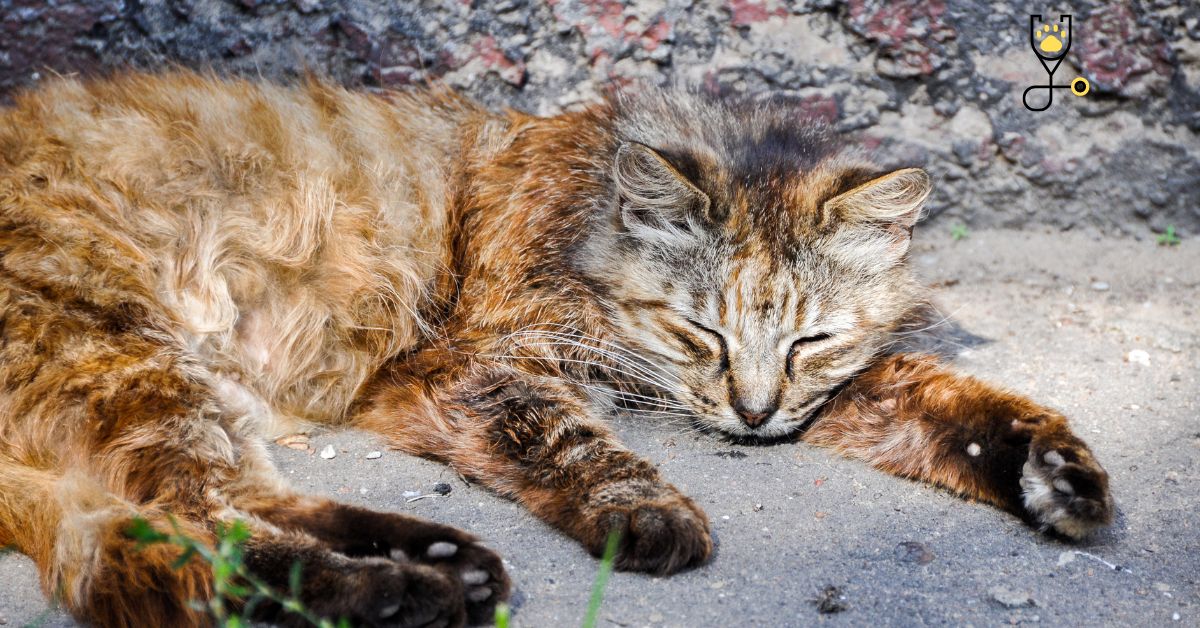If you’re a cat owner, you should be aware of renal amyloidosis-a serious kidney condition that can occur in cats. This post will explain what renal amyloidosis is, including its causes, symptoms, and treatment options. You’ll also learn how to prevent your cat from developing this condition. So, if you’re concerned about your feline friend’s health, keep reading!
Renal Amyloidosis
Renal amyloidosis is a condition that occurs when amyloid proteins build up in the kidneys. Amyloid proteins are normally produced by the body and are essential for various functions, such as blood clotting. However, in renal amyloidosis, these proteins accumulate in the kidney tissue and cause damage. This can lead to kidney failure and other serious health problems.
Types of Amyloid Proteins
There are two types of renal amyloidosis:
- primary: Primary renal amyloidosis is caused by a genetic mutation that leads to the overproduction of amyloid proteins
- secondary: Secondary renal amyloidosis is caused by another condition that triggers the buildup of these proteins.
Symptoms of Renal Amyloidosis in cats
The symptoms of renal amyloidosis can vary depending on the severity of the condition. However, some common signs include:
1. Increased thirst: Cats with renal amyloidosis may drink more water than usual.
2. Increased urination: cats may urinate more often or in larger amounts than normal.
3. Weight loss: Some cats may lose weight even though they have a good appetite.
4. lethargy: cats with renal amyloidosis may seem tired and less active than usual.
5. vomiting: This symptom is more common in cats with secondary renal amyloidosis.
6. Diarrhea: This symptom is also more common in cats with secondary renal amyloidosis. If you
notice any of these symptoms in your cat, it’s important to take them to the vet for a check-up.
Causes of Renal Amyloidosis in cats
-Primary renal amyloidosis is caused by a genetic mutation that leads to the overproduction of amyloid proteins.
-Secondary renal amyloidosis is caused by another condition that triggers the buildup of these proteins. Conditions that can cause secondary renal amyloidosis to include:
-Infections: Viral infections, such as feline leukemia virus (FeLV) or feline immunodeficiency virus (FIV), can cause renal amyloidosis.
-Inflammatory diseases: Autoimmune diseases, such as inflammatory bowel disease (IBD), can also lead to the development of this condition.
-Cancer: Some types of cancer, such as lymphoma, can cause renal amyloidosis.
-Kidney disease: Renal amyloidosis can be a complication of chronic kidney disease (CKD).
Risk factors for renal amyloidosis include:
-Age: Older cats are more at risk of developing this condition.
-Breed: Certain breeds, such as Siamese cats, are more prone to developing renal amyloidosis.
-Gender: Male cats are more likely to develop this condition than females.-Lifestyle: Cats that live a sedentary lifestyle are at greater risk of developing renal amyloidosis.
Complications of Renal Amyloidosis in cats
If renal amyloidosis is left untreated, it can lead to a number of serious complications, such as

-Kidney failure: Renal amyloidosis can cause the kidneys to fail. This is a life-threatening condition that requires immediate veterinary treatment.
-High blood pressure: This condition can damage the kidneys and other organs.
-Anemia: Renal amyloidosis can lead to anemia, which is a condition in which the body does not have enough healthy red blood cells.
-Heart problems: This condition can cause heart failure and other heart problems.
Diagnosing Renal Amyloidosis in cats
Renal amyloidosis can be difficult to diagnose because the symptoms can mimic those of other conditions. If your vet suspects that your cat has
this condition, they will likely recommend one or more of the following tests:
-Complete blood count (CBC): This test can help to rule out other conditions that can cause similar symptoms.
-Urinalysis: This test can help to detect the presence of amyloid proteins in the urine.
-Kidney biopsy: This test involves taking a small sample of kidney tissue for examination under a microscope.
-X-rays: X-rays can help to assess the size and shape of the kidneys.
-Ultrasound: This test can help to evaluate the condition of the kidneys and other organs.
Preventing Renal Amyloidosis in cats
There is no known way to prevent primary renal amyloidosis. However, there are some steps that you can take to help prevent secondary renal amyloidosis, such as:
1. Vaccinating your cat: This can help to prevent viral infections, such as FeLV and FIV, which can lead to renal amyloidosis.
2. Keeping your cat healthy: This can help to prevent conditions, such as IBD and cancer, that can trigger the development of this condition.
3. Feeding a balanced diet: A healthy diet can help to keep your cat’s kidneys healthy and prevent CKD.
4. Taking your cat for regular check-ups: This can help to detect renal amyloidosis in its early stages and allow for early treatment.
Treatment of Renal Amyloidosis in cats
There is no cure for renal amyloidosis. However, treatment can help to improve your cat’s quality of life and extend its life expectancy. Treatment options include:
- Dietary changes: A special diet can help to manage the symptoms of this condition and prevent further damage to the kidneys.
- Fluid therapy: This can help to prevent dehydration and flush out toxins from the body.
- Medications: There are a number of medications that can be used to treat renal amyloidosis. These include diuretics, ACE inhibitors, and steroids.
- Kidney transplant: In some cases, a kidney transplant may be an option. This is a major surgery that is typically only recommended for cats that are otherwise healthy.
- Euthanasia: In some cases, the best course of action may be to euthanize your cat. This decision should be made with the help of your veterinarian.
Conclusion
Renal amyloidosis is a serious condition that can be difficult to treat. However, with early diagnosis and treatment, it is possible to extend your cat’s life and improve its quality of life. If you think that your cat may have this condition, it is important to see your veterinarian as soon as possible.
FAQ’s
Renal amyloidosis is a condition that results from the buildup of amyloid proteins in the kidneys. This can lead to kidney failure and other serious complications.
The symptoms of renal amyloidosis can vary depending on the severity of the condition. They may include weight loss, lethargy, vomiting, diarrhea, and increased thirst and urination.
There are two types of renal amyloidosis: primary and secondary. Primary renal amyloidosis is caused by a genetic mutation. Secondary renal amyloidosis is caused by other underlying conditions, such as infection, inflammation, or cancer.
Renal amyloidosis can be difficult to diagnose because the symptoms can mimic those of other conditions. If your vet suspects that your cat has this condition, they will likely recommend one or more of the following tests: -Urinalysis: This test can help to detect the presence of amyloid proteins in the urine.-Kidney biopsy: This test involves taking a small sample of kidney tissue for examination under a microscope.-X-rays: X-rays can help to assess the size and shape of the kidneys.-Ultrasound: This test can help to evaluate the condition of the kidneys and other organs.
There is no cure for renal amyloidosis. However, treatment can help to improve your cat’s quality of life and extend its life expectancy. Treatment options include dietary changes, fluid therapy, medications, and kidney transplant.







